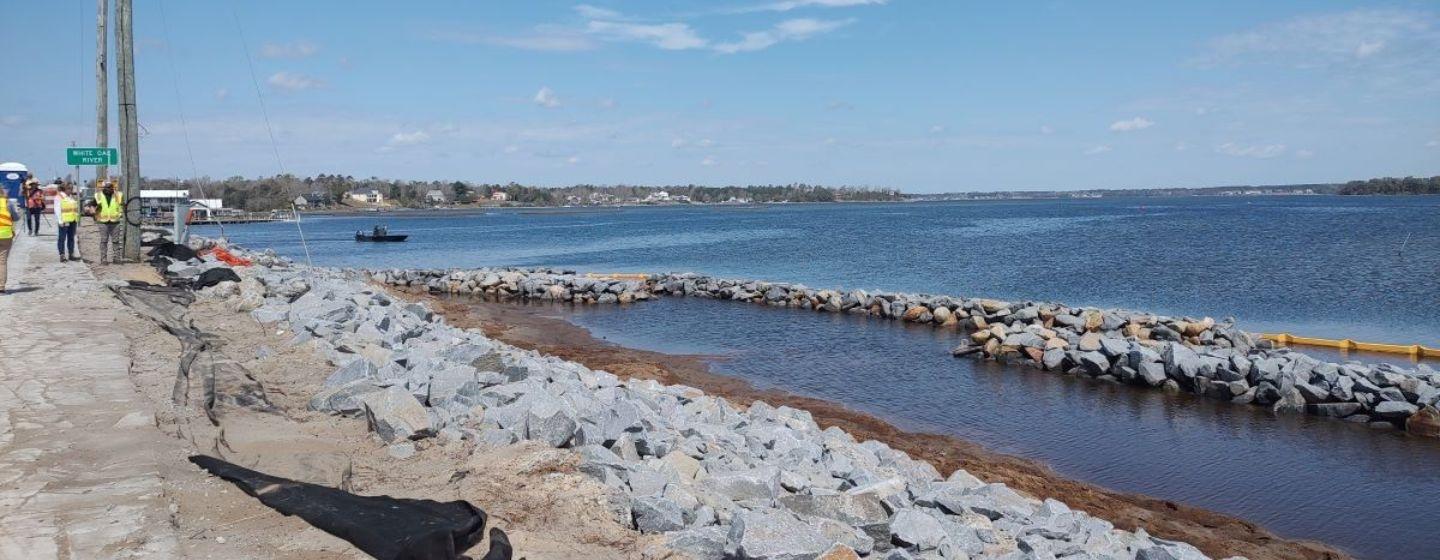NCDOT Turns to Living Shorelines to Protect Roads from Rising Seas


The North Carolina Department of Transportation (NCDOT) is turning to nature-based solutions to protect an important causeway from rising seas and stronger storms.
The agency has partnered with the nonprofit North Carolina Coastal Federation to build a living shoreline along the causeway between Swansboro and Cedar Point to protect N.C. 24. Living shorelines combine engineered and natural features to reduce wave energy and erosion.
“This is NCDOT’s first living shoreline project, and it really shows our commitment to using nature-based solutions to provide resiliency and climate adaptation into our state’s highway infrastructure,” NCDOT stormwater engineer Brian Lipscomb shared in a recent interview with PBS North Carolina.
The highway section was selected for the project because it is a vital hurricane evacuation route and offers important access for military installations like Marine Corps Base Camp Lejeune in Jacksonville. The causeway has suffered storm damage in the past.
The project will include a salt marsh planted over a quarter of an acre, about 900 feet of granite rock to break the waves and protect the marsh, and a 3-D structure made of coconut fiber and cement to attract oysters to the area. The total cost of the project is $3.6 million.
“They’ve proven to be much more resilient and less prone to failures than traditional bulkheads,” noted Lipscomb. He also added that they provide new fish habitat, improve water quality (because the oysters filter the water) and reduce erosion.
NCDOT plans to monitor the living shorelines and the road protection they provide once the project is finished. What’s learned from this project will be applied to other roadways that border coastlines. NCDOT hopes to make more than 500 miles of coastal roads resilient to storms using nature-based solutions.
“We’ve seen from other projects across the state and, across the country, that the shorelines really help with resilience and stand up to traditional hardening methods,” said Lipscomb.
That’s good news for Dr. Lexia Weaver, a coastal scientist and living shoreline program director for the North Carolina Coastal Federation. The group is working to make living shorelines the primary method for shoreline stabilization. The work along N.C. 24 is a model for others to learn from.
“Living shorelines have proven time and time again to work significantly better, are more cost effective and more resilient to the effects of storms compared to the traditionally used bulkheads and seawalls that have hardened our shoreline and reduced our valuable salt marsh and oyster habitats in the process,” said Weaver. She added that living shorelines are a “more resilient, environmentally friendly approach to erosion control.”
Funding for the project was provided by the North Carolina General Assembly, the NCDOT bridge maintenance money and a grant from the National Fish and Wildlife Foundation awarded to the Coastal Federation in partnership with NCDOT.